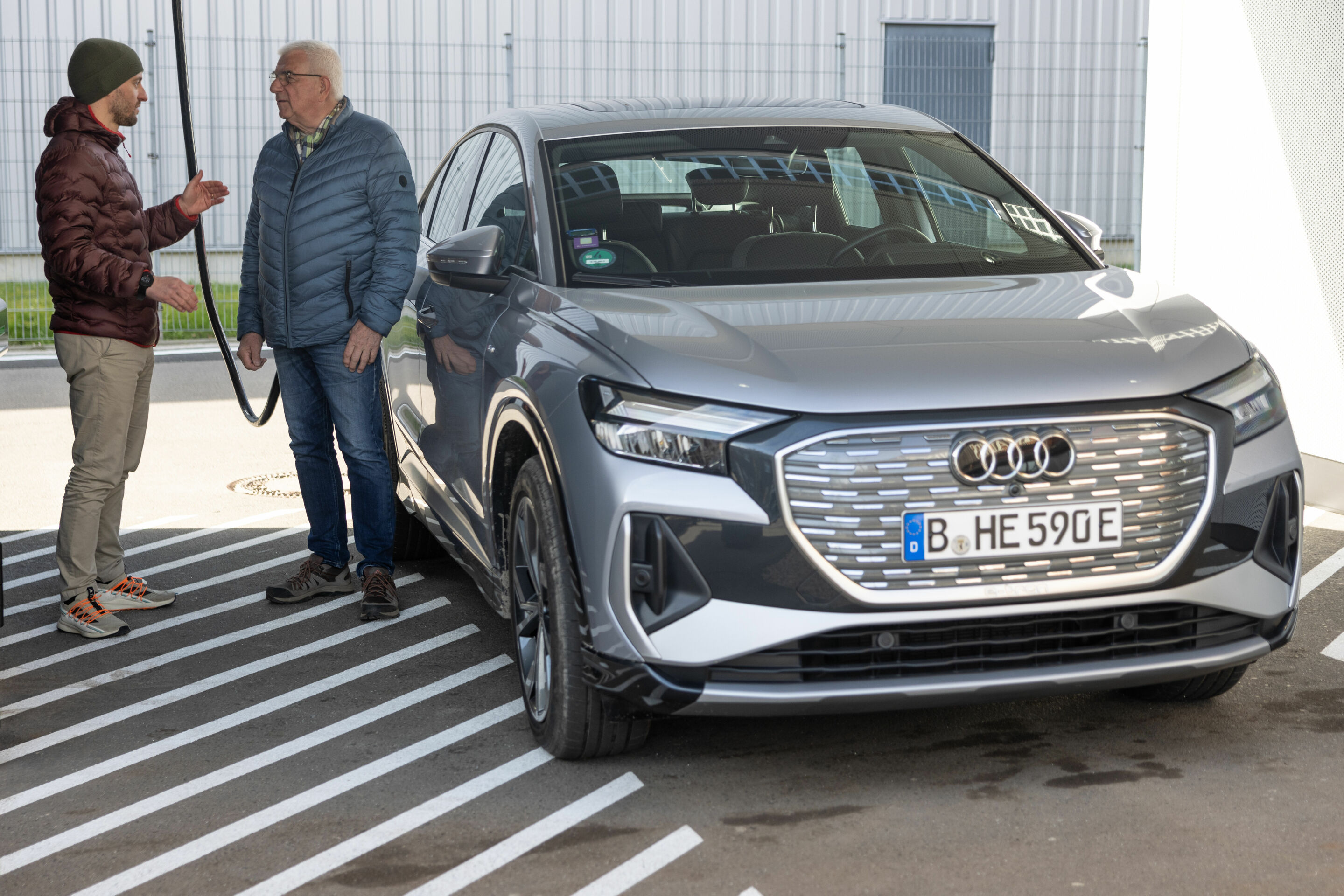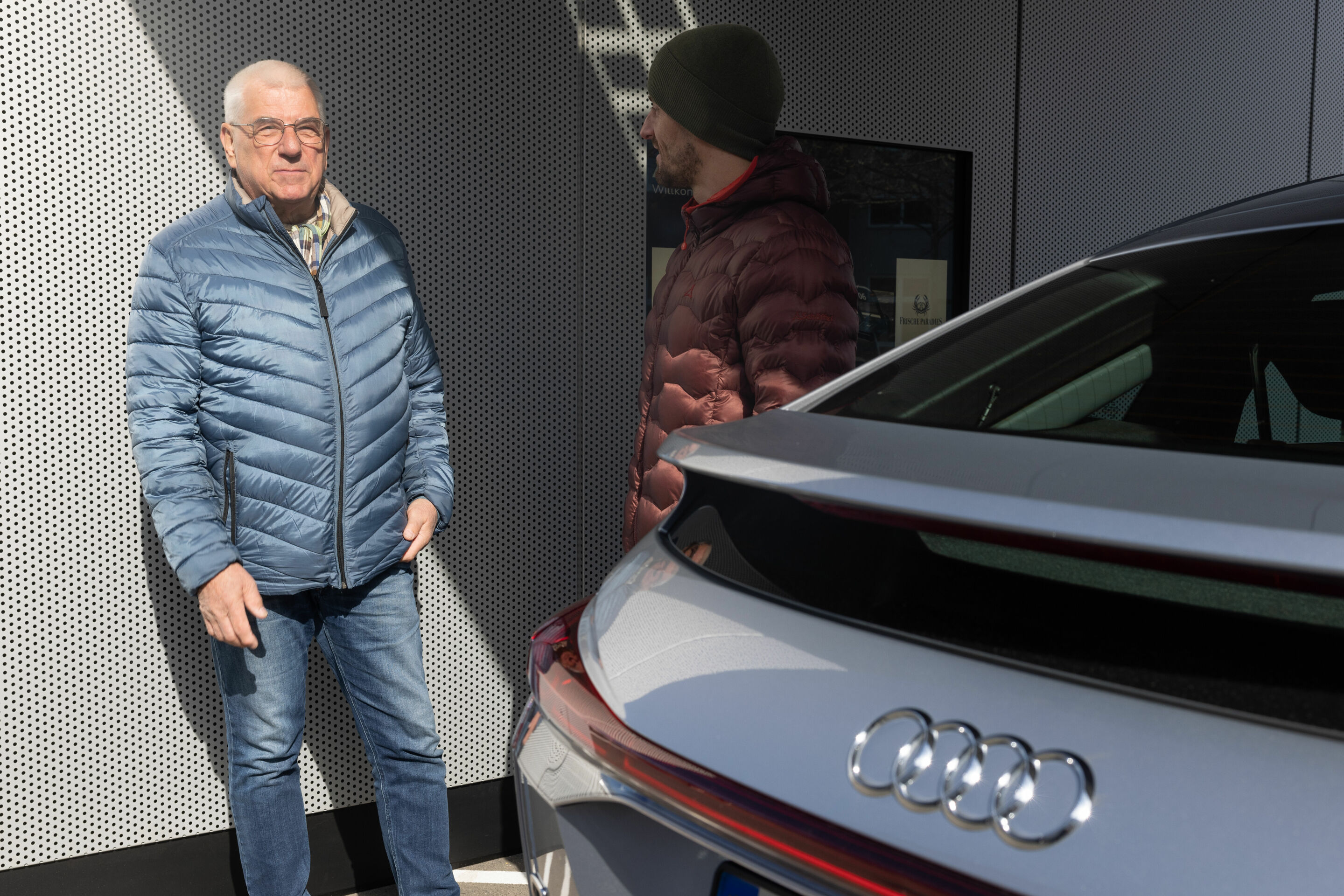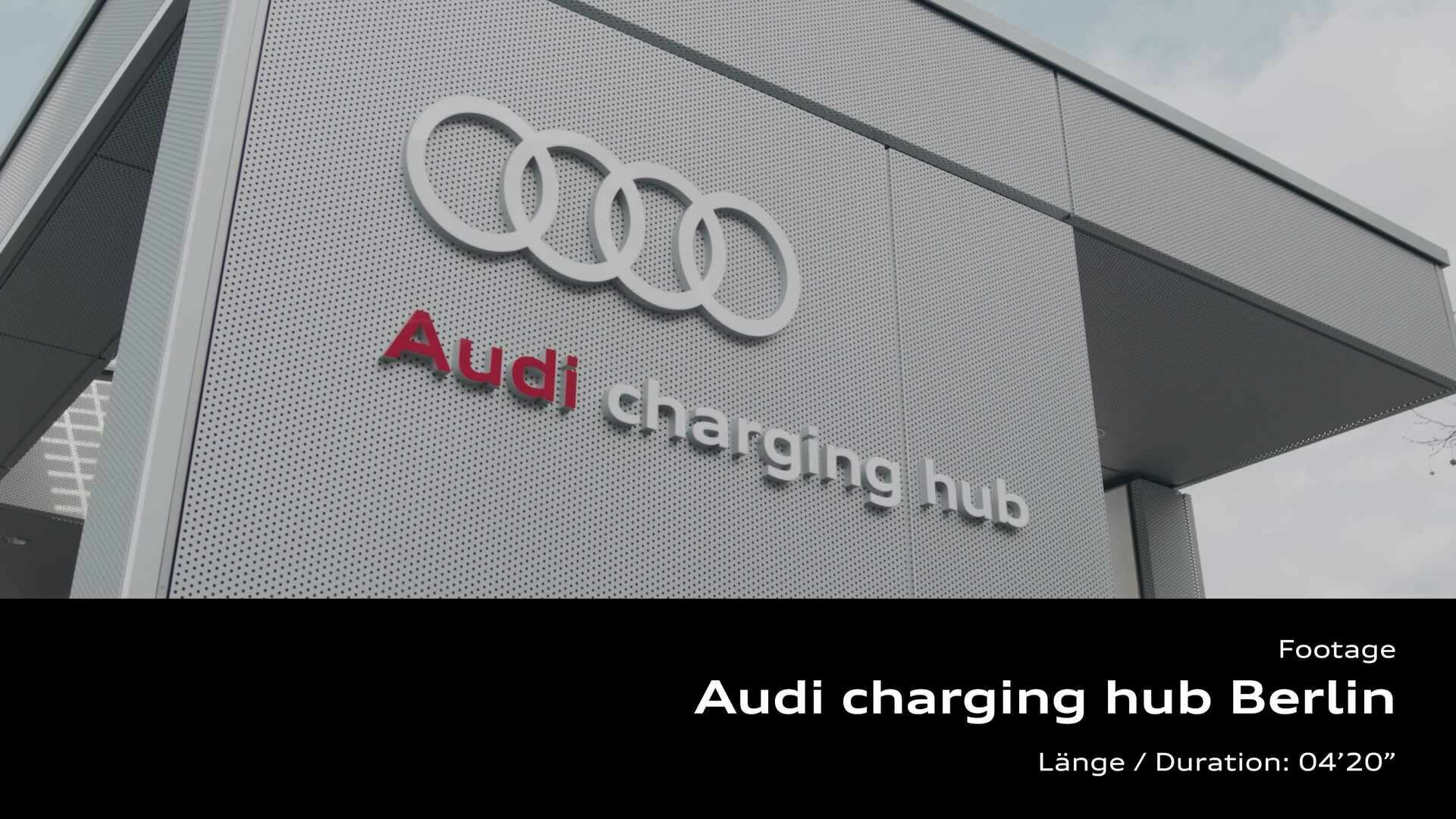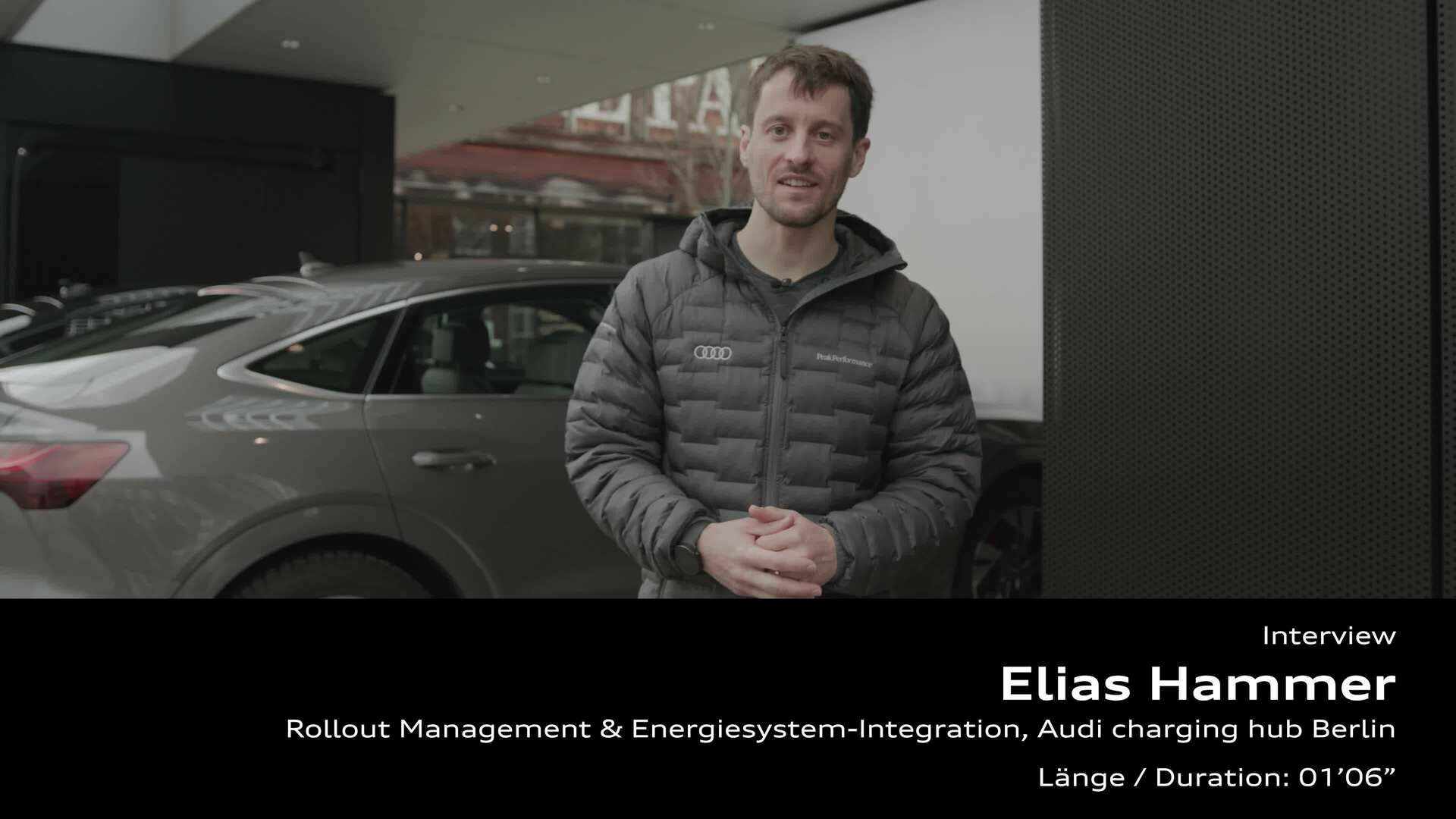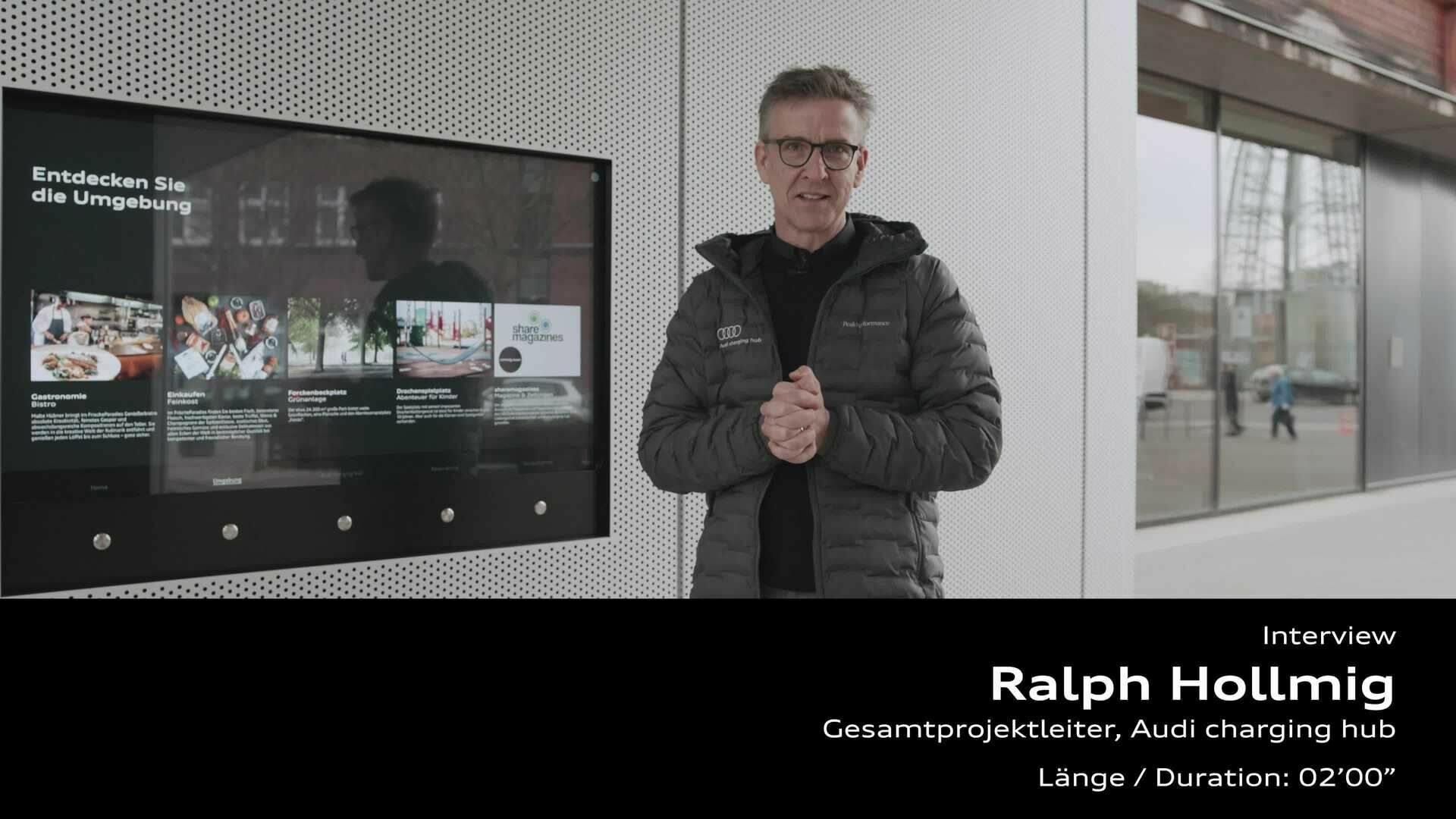“Electrifying” opportunities instead of charging boredom: New Audi charging hub in downtown Berlin
- Urban quick-charging site in high-density Prenzlauer Berg neighborhood
- Power hooked up through cooperation partner Frischeparadies
- Other compact Audi charging hubs to follow in 2023
The brand with the four rings is opening a third Audi charging hub right in the center of Berlin. In the German capital, as in Nuremberg and Zurich, second-life batteries will act as buffer storage, and, like Zurich, the compact Audi charging hub with four quick-charging points will be used. At the site in Prenzlauer Berg, however, Audi is taking a different approach to the power hookup. This development is explained in this interview by Elias Hammer, who is the Audi Manager responsible for the rollout in Berlin and for the energy system integration for the Audi charging hub. Future users of the Audi charging hub in Berlin can look forward to an “electrifying wait” during charging instead of the usual boredom as the cooperation with Frischeparadies will mean the time can be put to good use. For Jörg Haucke, a Q4 e-tron customer living in Berlin, the Audi charging hub is the perfect solution for urban charging, with many large cities currently still lacking a quick-charging infrastructure.
Why did Audi select the compact version of its charging hub in Berlin?
Elias Hammer: The site in Prenzlauer Berg is close to the east-west B1 highway in a high-density residential area. It is an ideal location for the compact version of the hub to offer drivers of electric cars, most of whom have no home charging option, a convenient and above all reliable quick-charging option in the city center. In general, we expect a high charging demand in cities for commuters returning home. The buffer storage unit always ensures a constant output of 320 kW at each charging point. We expect the Prenzlauer Berg site in particular to be highly frequented. As is the case here, we generally build our charging hubs where our customers can include a charging stop of 30 to 40 minutes in their daily routine. To this end, we utilize, among other tools, an in-house data analysis to determine on-site demand and plan the right location. The area, which houses the compact version with four covered charging points at two power cubes, is located right next to our cooperation partner.
How do you, as an e-tron driver, use the Audi charging hub?
Jörg Haucke: I’ve been pushing for a charging station in my building’s underground garage for some time. Unfortunately, it’s quite complicated. There’s a public charging station a few minutes from my apartment that I sometimes use. The Audi charging hub is definitely more convenient – and cheaper, too, I’ve discovered. To be honest, I was a little envious when I first heard about the Audi charging hub in Nuremberg some time ago. After all, public charging stations are not always free when you need them. The Audi charging hub is an ideal addition to the charging infrastructure in Berlin.
How is Audi preparing for the rush of customers it might see?
Elias Hammer: This is where Audi drivers benefit from the booking system. Theoretically, it would even be possible to add another power cube relatively quickly if there is sufficient demand. Thanks to the modular concept, the four charging points can quickly be turned into six. This means we can respond on the fly to higher demand.
Jörg Haucke: As a driver of a Q4 e-tron, I’m pleased to hear this. In the future, I’ll be able to reserve a charging spot or check if there is a free charging point via the myAudi app. Another practical feature is the new Audi charging service, which makes charging convenient and reliable almost anywhere in Europe.
Which partner is Audi relying on to upgrade the charging hub in Berlin?
Elias Hammer: In Berlin, we are cooperating with Frischeparadies, which boasts attractive shopping opportunities and a gourmet bistro. With its high quality standards, Frischeparadies is a partner that fits well with the Audi brand.
As a customer, how will you use the time when your car is charging?
Jörg Haucke: The Audi charging hub is located very close to most of my work appointments. Even though I’m retired, I supervise trainees and can charge my car during my meetings with them. I’m sure there will also be the odd cup of coffee or shopping stop, and even a little time to relax. True, a visit to the Audi charging hub is not strictly recreation, but it does provide some amenities while charging. There will certainly be some shop talk around the charging station or at the bistro.
What technical differences are there compared to the charging hubs in Nuremberg and Zurich?
Elias Hammer: In Berlin, we are connected to Frischeparadies’s power grid as a sub-consumer. That’s the main difference. Our dynamic, smart load control, which we developed in-house, actively measures how much power Frischeparadies is taking from the grid. This lets us ensure that we only recharge when our partner’s energy demands on the grid are low. The upshot is that we do not need an additional power hookup in Berlin. It also means that the existing green energy connection will cover the power needs of the Audi charging hub. This approach enables optimal utilization of the existing power grid infrastructure, all the more so because the 1.05 MWh battery storage system makes the charging hub self-contained in terms of its power requirements.
Jörg Haucke: How is the battery storage system built?
Elias Hammer: The battery storage system uses Audi e-tron batteries from our test vehicles. The batteries still have a high capacity, which we want to make full use of. The Audi charging hub gives batteries a second life, so to speak. Three power cubes with 198 modules each and a storage cube with 330 modules are installed in the Nurembeg hub. All told that makes 924 modules. In Berlin, there are a total of 396 modules with a capacity of 1.05 MWh – the equivalent of 14 Audi Q4 e-trons.
As an e-tron customer, will you be using the Audi charging hub regularly?
Jörg Haucke: I think so, yes. First, there is the price of 0.35 euros per kWh, which is very attractive for Audi charging service users.On average, other quick-charging stations in Berlin are nearly twice as expensive. Audi’s concept makes it easy to work charging into my daily routine. The booking system is also available to me and I can make good use of the charging time, which is usually just spent waiting.
What’s next for the Audi charging hub concept after the opening in Berlin?
Elias Hammer: We’re planning to open another compact Audi charging hub in Salzburg at the end of May 2023 followed by one in Munich. In the first wave, we will roll out versions without a lounge, joining up with partner companies to offer service facilities, in order to gain further experience and gather more data. We want to understand our customers so that we can guarantee the best possible service with compact versions, but from 2024 also offer versions with lounges of different sizes. For this reason, we are seeking additional partner companies and suitable urban locations.
As an e-tron customer, what would you like to see, in general, when it comes to charging?
Jörg Haucke: The Q4 e-tron is the twelfth Audi I’ve owned since 1991 and the first Audi to feature an all-electric drive system. In general, I would like to see more public charging options. In that respect, a lot remains to be done. Audi is leading the way with its urban charging concept, one that also helps create brand loyalty.
